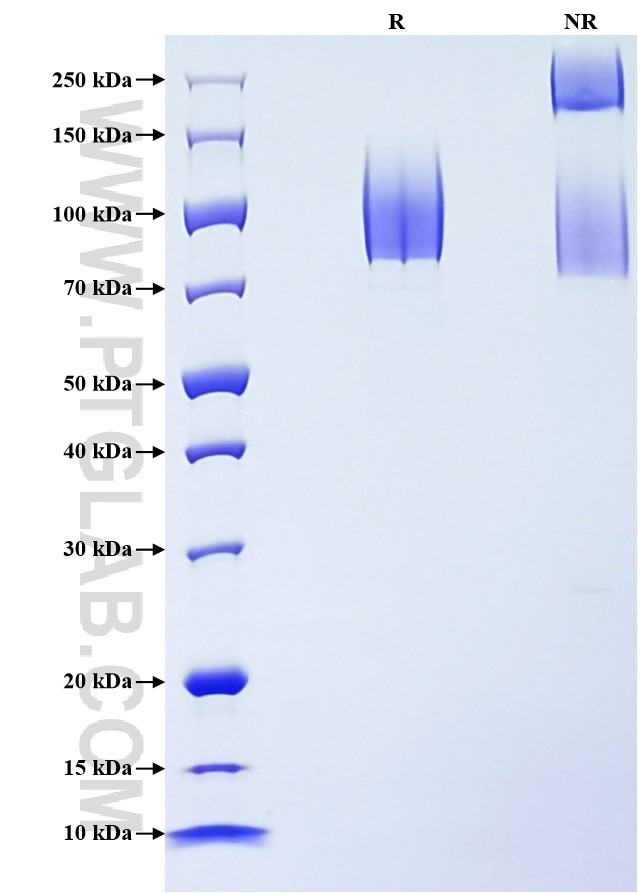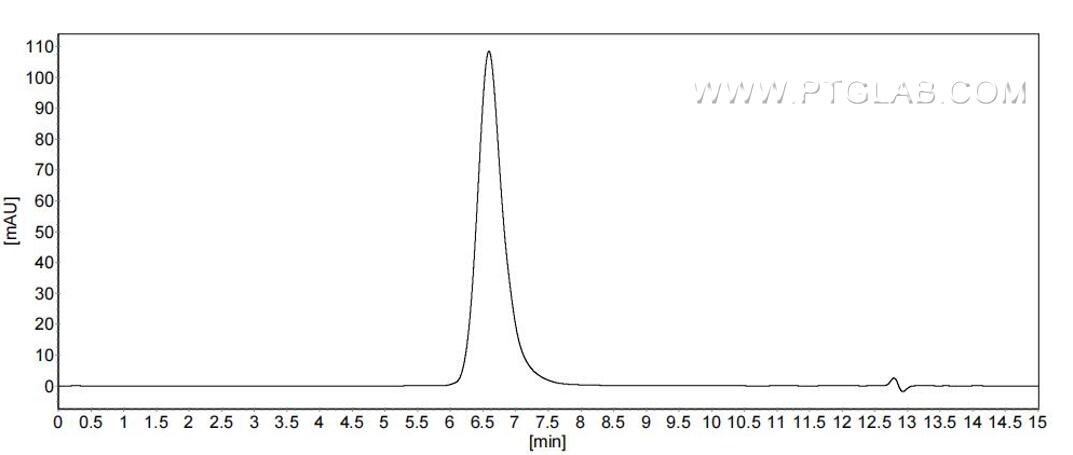Recombinant Human LAMP3 protein (rFc Tag) (HPLC verified)
Species
Human
Purity
>90 %, SDS-PAGE
>90 %, SEC-HPLC
Tag
rFc Tag
Activity
not tested
Cat no : Eg3594
Validation Data Gallery
Product Information
| Purity | >90 %, SDS-PAGE >90 %, SEC-HPLC |
| Endotoxin | <0.1 EU/μg protein, LAL method |
| Activity |
Not tested |
| Expression | HEK293-derived Human LAMP3 protein Lys28-Thr381 (Accession# Q9UQV4) with a rabbit IgG Fc tag at the C-terminus. |
| GeneID | 27074 |
| Accession | Q9UQV4 |
| PredictedSize | 64.0 kDa |
| SDS-PAGE | 80-120 kDa, reducing (R) conditions |
| Formulation | Lyophilized from 0.22 μm filtered solution in PBS, pH 7.4. Normally 5% trehalose and 5% mannitol are added as protectants before lyophilization. |
| Reconstitution | Briefly centrifuge the tube before opening. Reconstitute at 0.1-0.5 mg/mL in sterile water. |
| Storage Conditions |
It is recommended that the protein be aliquoted for optimal storage. Avoid repeated freeze-thaw cycles.
|
| Shipping | The product is shipped at ambient temperature. Upon receipt, store it immediately at the recommended temperature. |
Background
LAMP3 (lysosome-associated membrane protein 3), also known as DC-LAMP (DC-lysosome-associated membrane glycoprotein), TSC403, or CD208, is a highly glycosylated lysosomal membrane protein that belongs to the LAMP family. The mature glycoprotein has an apparent molecular mass of 70-90 kDa, which is considerably larger than its predicted mass of 44 kDa. LAMP3 is expressed in lung type II pneumocytes, lymphoid organs, and dendritic cells. It might change the lysosome function after the transfer of peptide-MHC class II molecules to the surface of dendritic cells. LAMP3 mRNA is up-regulated in some human cancers. LAMP3 overexpression is associated with an enhanced metastatic potential and may be a prognostic factor for cervical cancer.
References:
1.de Saint-Vis B. et al. (1998). Immunity. 9(3):325-336. 2.Ozaki K. et al. (1998). Cancer Res. 58(16):3499-3503. 3.Kanao H. et al. (2005). Cancer Res. 65(19):8640-8645.


